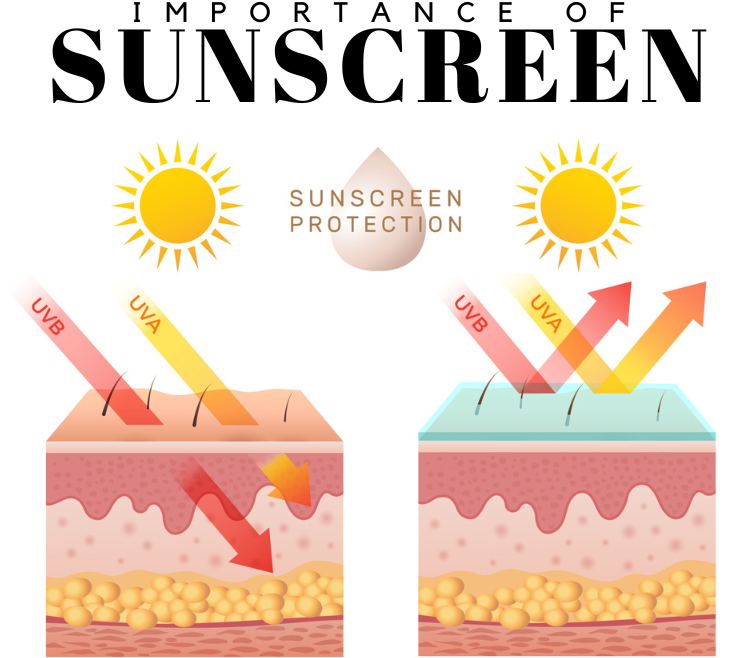Sunblock is one of the most important steps in a skincare routine. We are no strangers when it comes to applying sunblock. Every skincare line will have its own sunblock products, that come in different formulations, be it matte, moisturising, oil-free and more.
But how do we choose a sunblock that will offer us enough protection?
Before choosing a sunblock, we need to know what sunblock protects us from. A good sunblock should be able to protect us against UVA, UVB and blue light.

Image : Journal (10.20959/wjpr20211021242)
Ultraviolet A(UVA) has a longer wavelength, between 320-400nm, and is able to penetrate deeply into the skin, causing photo-ageing, pigmentation and skin cancer.
Ultraviolet B(UVB) has a shorter wavelength, between 280-320nm and damages the skin’s epidermis. It is the main cause of sunburn, and at the same time can also contribute to skin cancer.
Both UVA and UVB rays are harmful to our skin. Without protection, they damage the DNA in skin cells, producing free radicals and oxygen species that lead to skin cancer and premature ageing.
Blue light (high energy visible light) is one of the colours in the visible light spectrum. Blue light operates on wavelengths from 380nm-500nm. Based on studies from recent years, blue light can contribute to persistent hyperpigmentation, especially in the darker skin type (skin type IV-VI). Blue light can come from the sun like our smartphones, tablets and other electronic devices.
Now let’s look at how to protect ourselves from all of these harmful lights.

Spf is an indicator for UVB protection. It stands for sun protection factor. SPF is a measure of how much UVB is required to produce sunburn on protected skin. SPF number means how long can a person stay under the sun without getting sunburn. SPF 50 means you can stay under the sun without getting sunburn 50 times longer than if you were unprotected.
SPF 15= filters out 93% UVB
SPF 30= filters out 97% UVB
SPF 50= filters out 98% of UVB
Anything beyond SPF 50 makes very little difference in terms of the risk of sun damage.

To protect ourselves against UVA, the radiation that reaches the deeper layer of the skin and causes ageing and skin cancer, look for the label broad-spectrum or PA +++. To label broad spectrum, sunscreen must pass FDA’s broad-spectrum test. FDA’s approved broad spectrum sunscreens must provide UVA protection proportional to their UVB protection.
PA stands for Protection Grade of UVA.
PA+ = offer some UVA protection
PA++ = moderate UVA protection
PA+++ = High UVA protection
PA++++ = Very high UVA protection
Only the sunscreens that label with broad spectrum and PA+++ protect your skin against UV A. Ingredients that helps to reflect or absorb UVA includes zinc oxide, titanium oxide, octocrylene and benzophenones.
Sunscreens ingredients that offer protection against blue light include iron oxide and zinc oxide. Both of these ingredients work by reflecting the blue light and both UV radiation(UVA and UVB).
In conclusion, a good sunblock should be above SPF 30 with broad spectrum or PA+++. It is also important to look for ingredients such as zinc oxide and titanium oxide to block the blue light that causes persistent hyperpigmentation
Author: Dr Loh Jiaxin, July 2022

